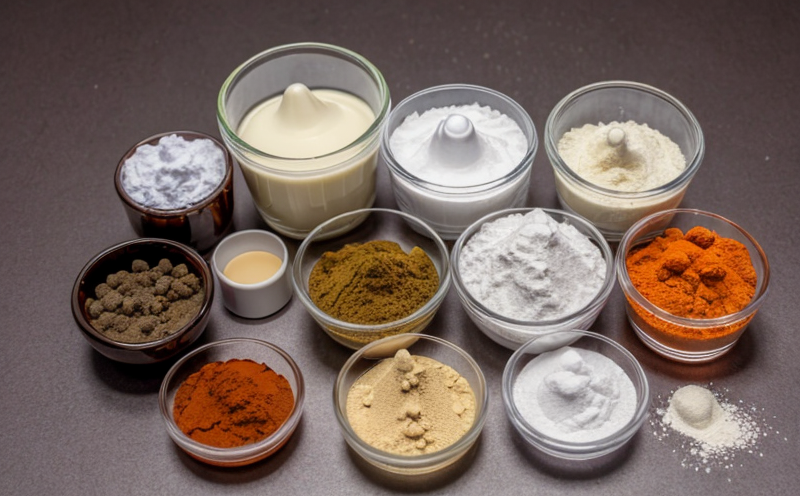ICH Q1B Photostability Testing
The International Conference on Harmonization (ICH) guideline Q1B outlines essential methods and requirements for assessing the photostability of pharmaceutical products. This testing is critical to ensure that excipients and formulation ingredients remain stable under light exposure, which directly impacts product quality, efficacy, and shelf life.
Photostability testing involves exposing the drug substance or drug product to different intensities and wavelengths of light over a prolonged period. The goal is to identify any changes in physical properties (such as color, solubility), chemical stability, or biological activity that may result from exposure to light. This testing ensures compliance with regulatory standards set by authorities like the FDA, EMA, and WHO.
Excipients play a crucial role in drug formulation. They influence how the active pharmaceutical ingredient (API) behaves within the body. For instance, excipients can affect solubility, stability, and bioavailability of APIs. Therefore, ensuring that these components are photostable is essential for product safety and efficacy.
The ICH Q1B guideline recommends using xenon arc lamps to simulate sunlight exposure, which can help replicate the degradation processes that occur in real-world storage conditions. Xenon light sources provide a broad spectrum of radiation, including UV and visible light, making them ideal for photostability testing.
During this process, samples are placed under controlled lighting conditions for varying durations (typically 6 months or longer). The resulting data helps pharmaceutical companies make informed decisions about packaging materials, storage recommendations, and potential formulation changes to enhance product stability.
The importance of photostability cannot be overstated. Non-compliance can lead to safety issues, recalls, and regulatory penalties. By adhering to ICH Q1B guidelines, manufacturers demonstrate their commitment to producing safe and effective drugs that meet global quality standards.
- Increased product stability: Ensures longer shelf life and better performance in storage conditions.
- Better compliance with regulatory requirements: Avoids potential legal issues and ensures market access.
- Potential cost savings: Reduces the need for post-market recalls and rework by identifying stability issues early on.
- Improved patient safety: Ensures that products remain safe and effective over their intended shelf life.
The photostability testing process is complex, involving precise control of environmental factors such as temperature, humidity, and light intensity. It requires specialized equipment capable of simulating real-world conditions accurately. Compliance with ICH Q1B ensures that the tests are conducted consistently across different laboratories, enhancing reliability and comparability.
Photostability testing is not just a compliance exercise but also an investment in product quality and patient safety. By adhering to these guidelines, pharmaceutical companies can build trust with regulators and consumers alike.
Why It Matters
The photostability of excipients and formulation ingredients is vital for ensuring the efficacy, safety, and stability of pharmaceutical products over their shelf life. Non-compliance with ICH Q1B guidelines can lead to significant risks:
- Product instability: Exposure to light may cause degradation or loss of activity in active pharmaceutical ingredients (APIs) and excipients.
- Regulatory non-compliance: Failure to meet regulatory standards can result in product recalls, fines, and reputational damage.
- Patient safety risks: Ineffective drugs pose serious health risks, necessitating rigorous testing protocols to prevent such issues.
The ICH Q1B guideline provides a standardized approach for assessing photostability, ensuring that the results are consistent and reliable. This consistency is crucial in maintaining product quality across different markets and regulatory jurisdictions.
By adhering to these guidelines, pharmaceutical companies can enhance their reputation as leaders in quality assurance, thereby gaining competitive advantage and trust from both regulators and consumers.
Eurolab Advantages
Eurolab offers comprehensive ICH Q1B Photostability Testing services tailored to meet the needs of pharmaceutical manufacturers. Our expertise lies in providing accurate, reliable, and compliant photostability testing that adheres strictly to international standards.
Our dedicated team of scientists ensures that every sample is handled with care, from initial sample preparation to final analysis. We use state-of-the-art equipment, including xenon arc lamps, spectrophotometers, and other precision instruments, to simulate real-world light exposure conditions accurately.
At Eurolab, we pride ourselves on delivering timely results while maintaining the highest level of accuracy and reproducibility. Our rigorous quality control measures ensure that all test data is accurate and reliable, providing you with confidence in your product's photostability.
We understand that time-to-market is crucial for pharmaceutical companies. Eurolab offers expedited testing options to meet tight deadlines without compromising on the quality of our services. Additionally, we provide detailed reports outlining the results of each test, including any observed changes and their potential impact on your product's stability.
Our commitment to excellence extends beyond just photostability testing. We also offer a wide range of other pharmaceutical testing services, including:
- Bioavailability studies
- Toxicology assessments
- Formulation development support
- Manufacturing process validation
With Eurolab by your side, you can be assured that every step of the pharmaceutical testing process is conducted with precision and care.





